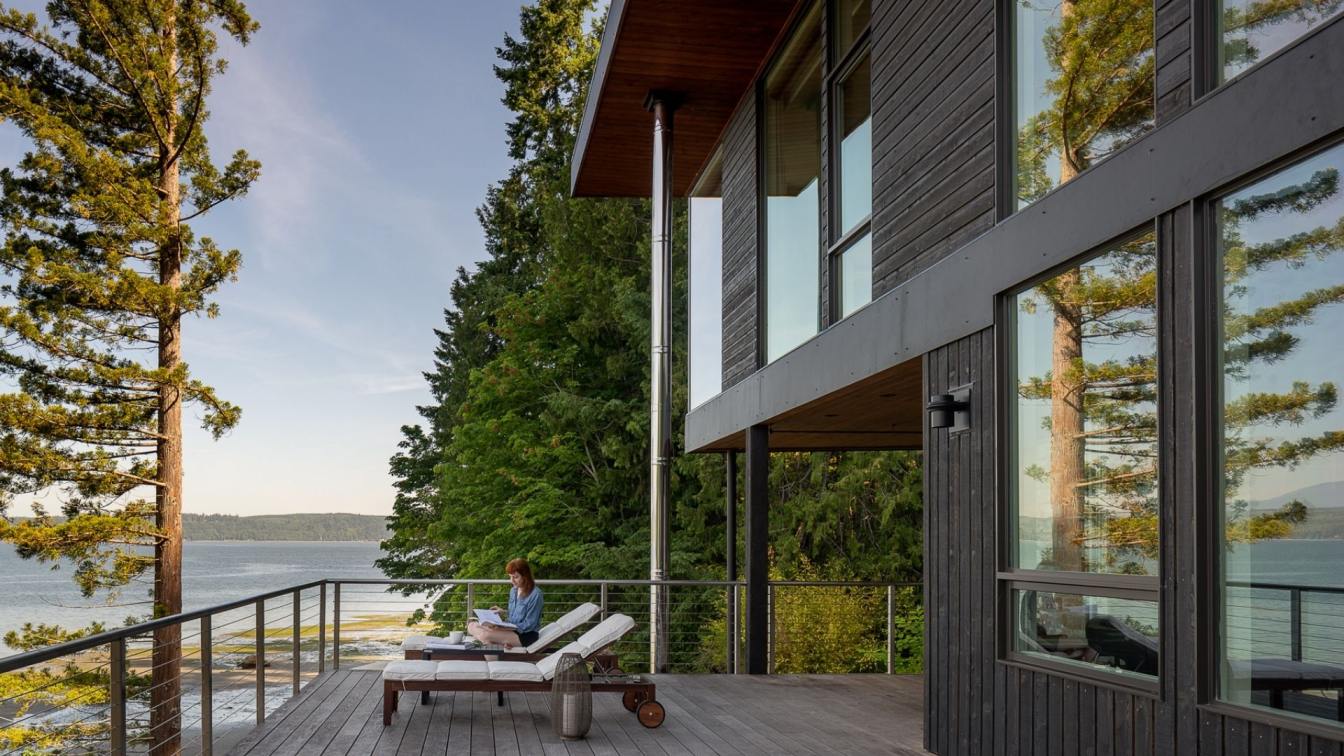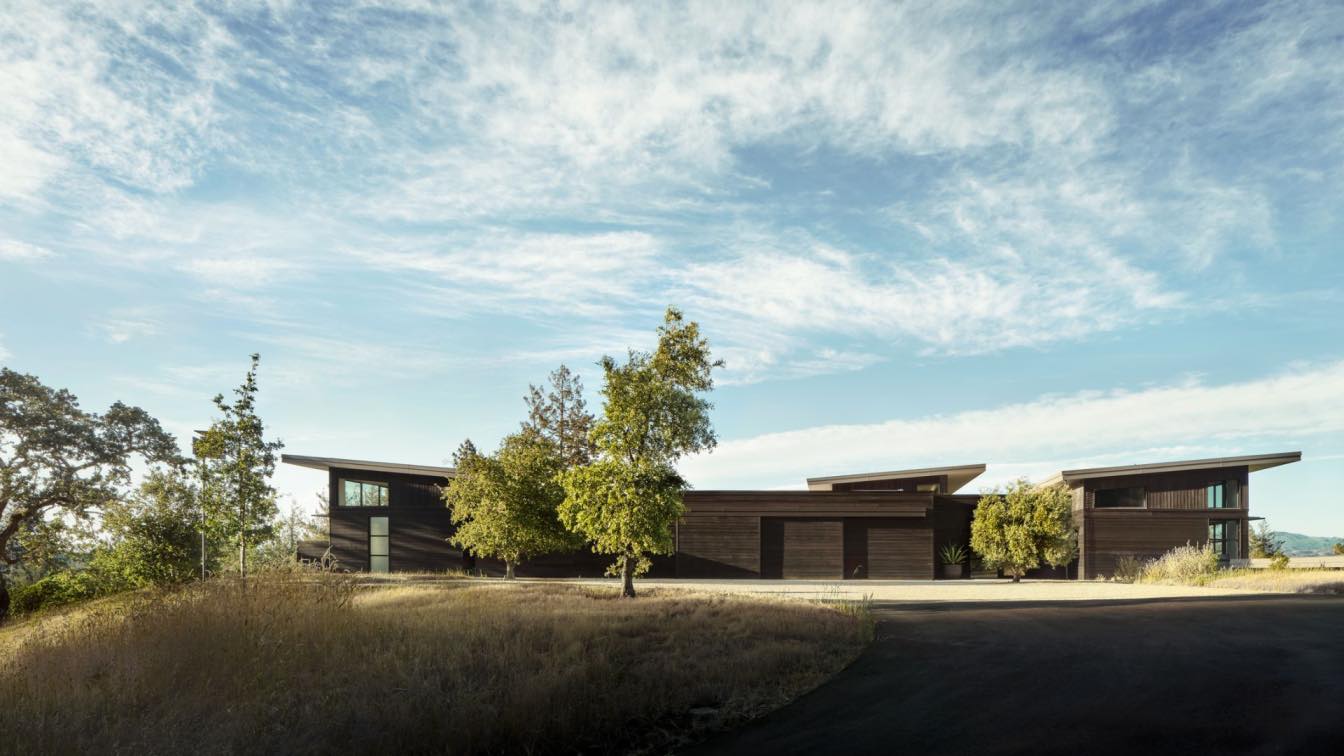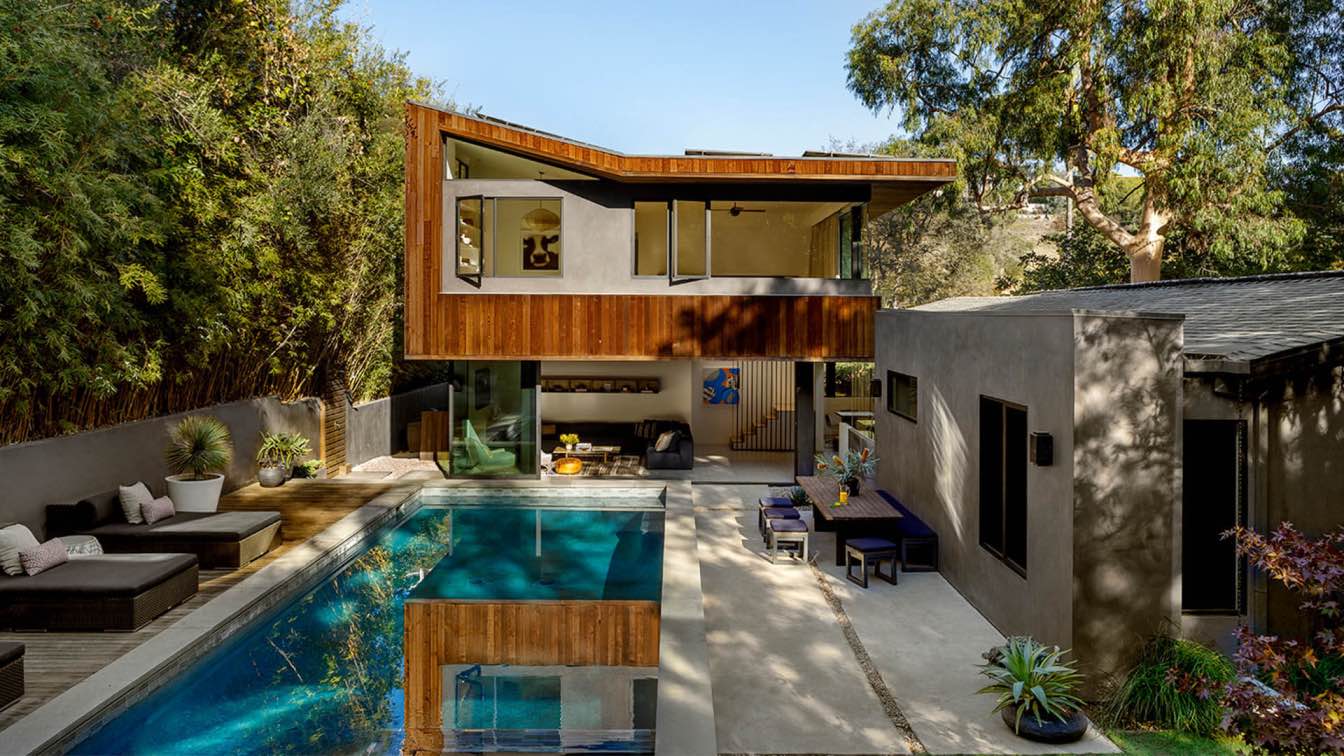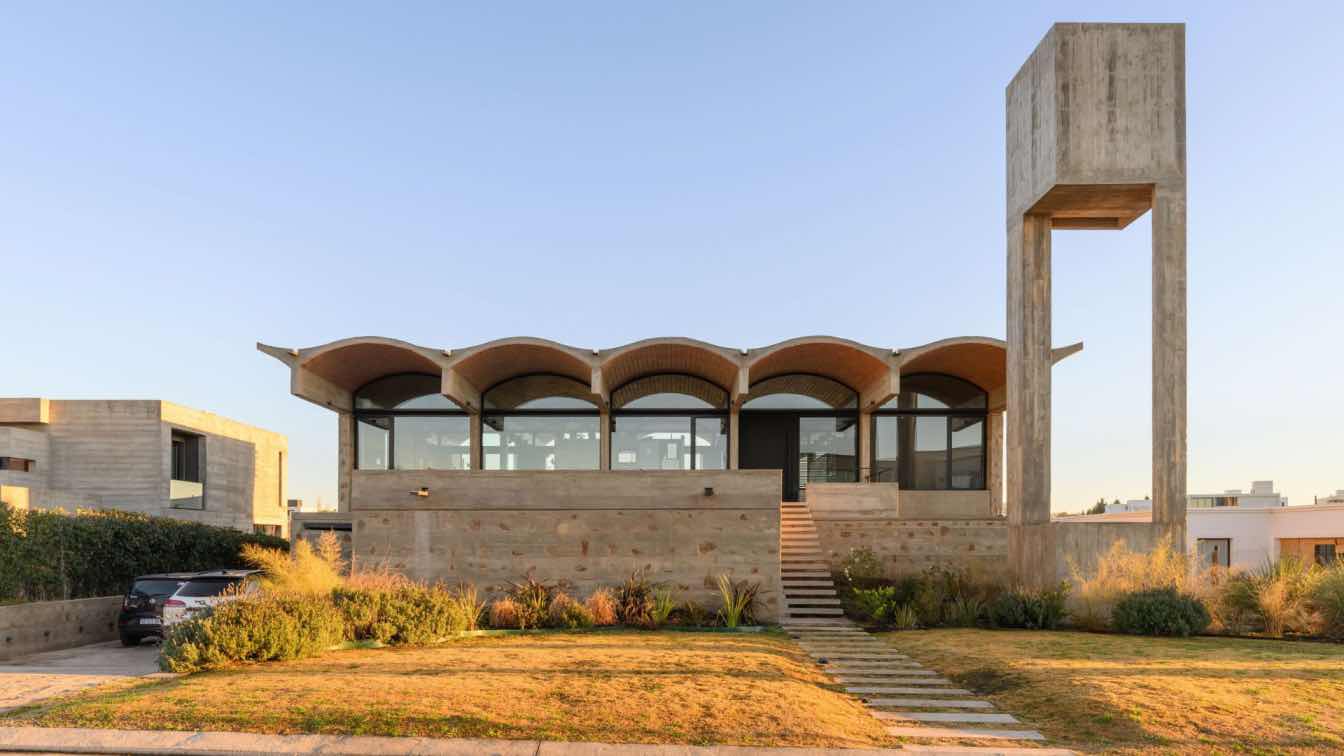Wittman Estes: Aldo Beach House transforms a 1940s beach house into a new multi-generational home—doubling the livable area while lightly touching the delicate ecology of the waterfront. Two shifting wings hover over the hillside and beach supported by thin steel columns and pin piles. Located on the eastern shore of Hood Canal near the Bangor submarine base, the new beach house includes the original two-bedroom structure for an expanded program of two new bedrooms, two bathrooms, and flex space. The design consists of three distinct parts: the original footprint, and the two projecting wings: the first a south ground floor addition, and the second an upper-level master suite to the north.
Solving the Regional Problem of Building on a Fragile Shoreline
The house represents a regional northwest problem of building on fragile shoreline. “Due to the complex constraints of the shoreline exemption, we kept to the existing footprint, expanding the house only from the existing structure,” says Matt Wittman, Principal at Wittman Estes. “As a result, all new square footage is supported by compact pier foundations on pin piles.”

Native plantings and drought tolerant species were brought in to mitigate site disturbance and increase the ecological function of the site. The architects wanted the site preservation to extend beyond the footprint and into the materials of the building itself. Local cedar, quintessential to a northwest house, wears naturally with the wet and dry seasons. Stainless steel and concrete provide a maritime accent to the wood materials. Through the use of naturally weathering materials, the life of the building was extended while allowing ease of maintenance for the users.
A Place for Relatives, Neighbors, and Friends
The clients, both grandparents and retirees, wanted a place of retreat and welcome. “Like many northwest families, that meant designing various indoor and outdoor spaces for their children, future grandchildren, neighbors, and friends,” says Wittman. The new wings of the house create a layering of community and privacy through guest bedrooms for friends, a bunk room and play area for kids, and an outdoor kitchen and deck for communal meals with neighbors. Two additions extend out of the original structure to meet this need – shaping shared spaces alongside rooms for reflection and privacy. Two decks seamlessly elongate the use of the adjacent spaces for encouraging late-night conversations next to an outdoor kitchen.

The original structure interplays throughout. Reclaimed pine flooring draws the Olympic forest to the interior. The existing brick chimneys blend into this palette, evoking timelessness and strength, representing the unique transformation of the house. The adaptive reuse of the Aldo Beach House sought a careful integration of the familiar with the modern, bringing the old and new together on the shoreline of Hood Canal.
Aldo Beach House Fast Facts
Located on the eastern shore of Hood Canal near the Bangor submarine base.The new beach house includes the original two-bedroom structure for an expanded program of two new bedrooms, two bathrooms, and flex space. The original cabin was built in the 1940s and added. Due to the complex constraints of the shoreline exemption, the architects kept to the existing footprint, expanding the house only from the existing structure.
The new wings of the house create a layering of community and privacy through guest bedrooms for friends, a bunk room and play area for kids, and an outdoor kitchen and deck for communal meals with neighbors.












































